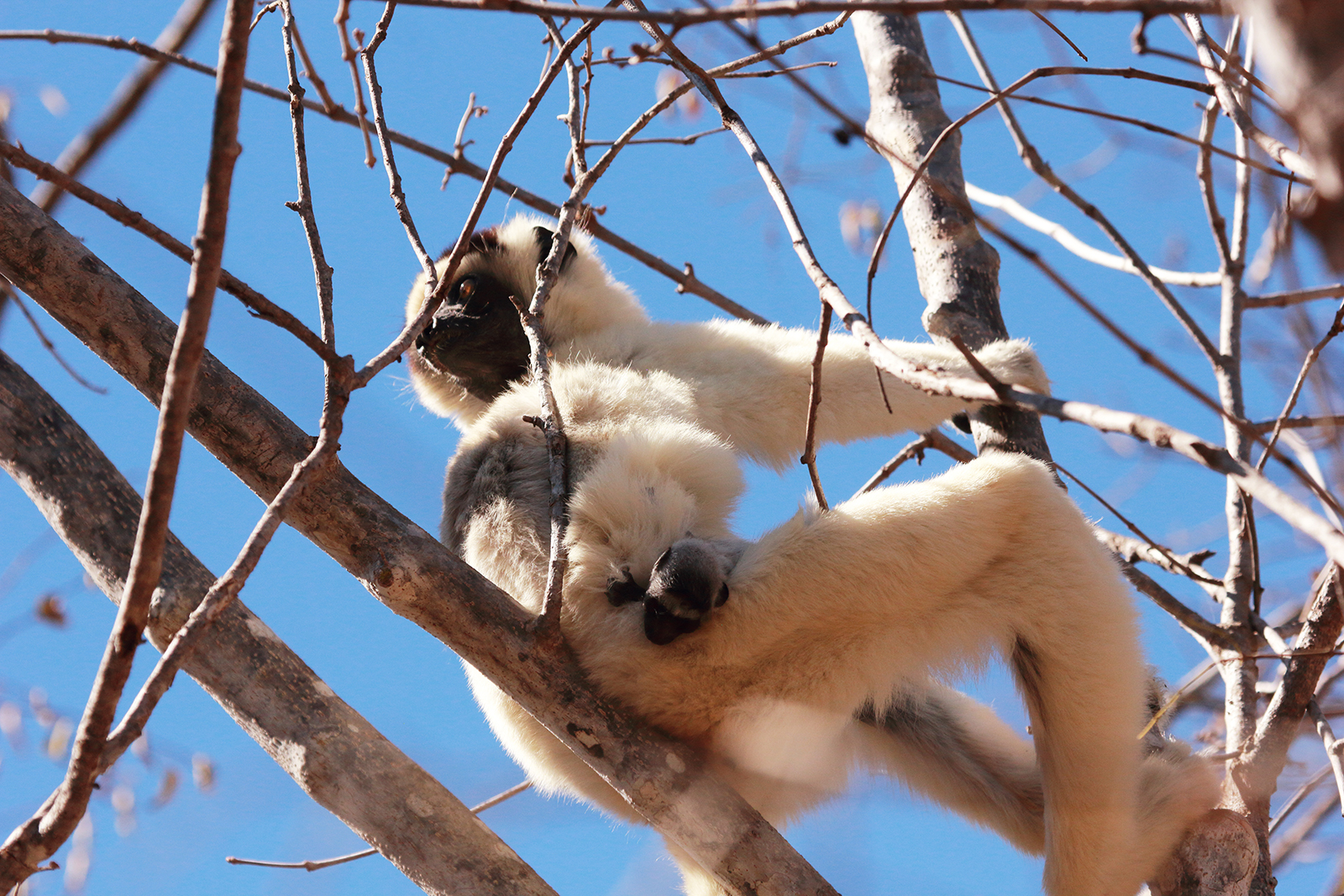The Eighth Continent – Madagascar – Part 4: Lemurs in Kirindy Forest
Thanks to my hotel Baobab Cafe in Morondava, I had pretty much all the excursions planned out up front. As there were two main forest reserves you could visit, one being a park run by the government and the other being a private park that technically (and surprisingly) belongs to a Swiss commercial logging institution, there was a bit of a confusion as to where I should choose to go.
Out of the two, the private park, Kirindy Private Reserve was closer to where I stayed (about 50km or a 1.5hr ride from Morondava) and was said to have confirmed Fossa spottings almost everyday. It also seemed to have the smallest lemur in the world, Madam Beth’s Mouse Lemur. The access roads to there were seemingly navigable in a regular car. Kirindy – Mitea, the government owned reservation,, has a similar biodiversity, but would generally require a 4×4 or a boat to access and would have cost me more than twice the private forest, for access alone. Being a wildlife enthusiast and a traveller with a mid-range budget, the choice was quite clear to me, I would go with the cheaper option and I could still see most of the wildlife.

Red Fronted Brown Lemur (Eulemur rufifrons). 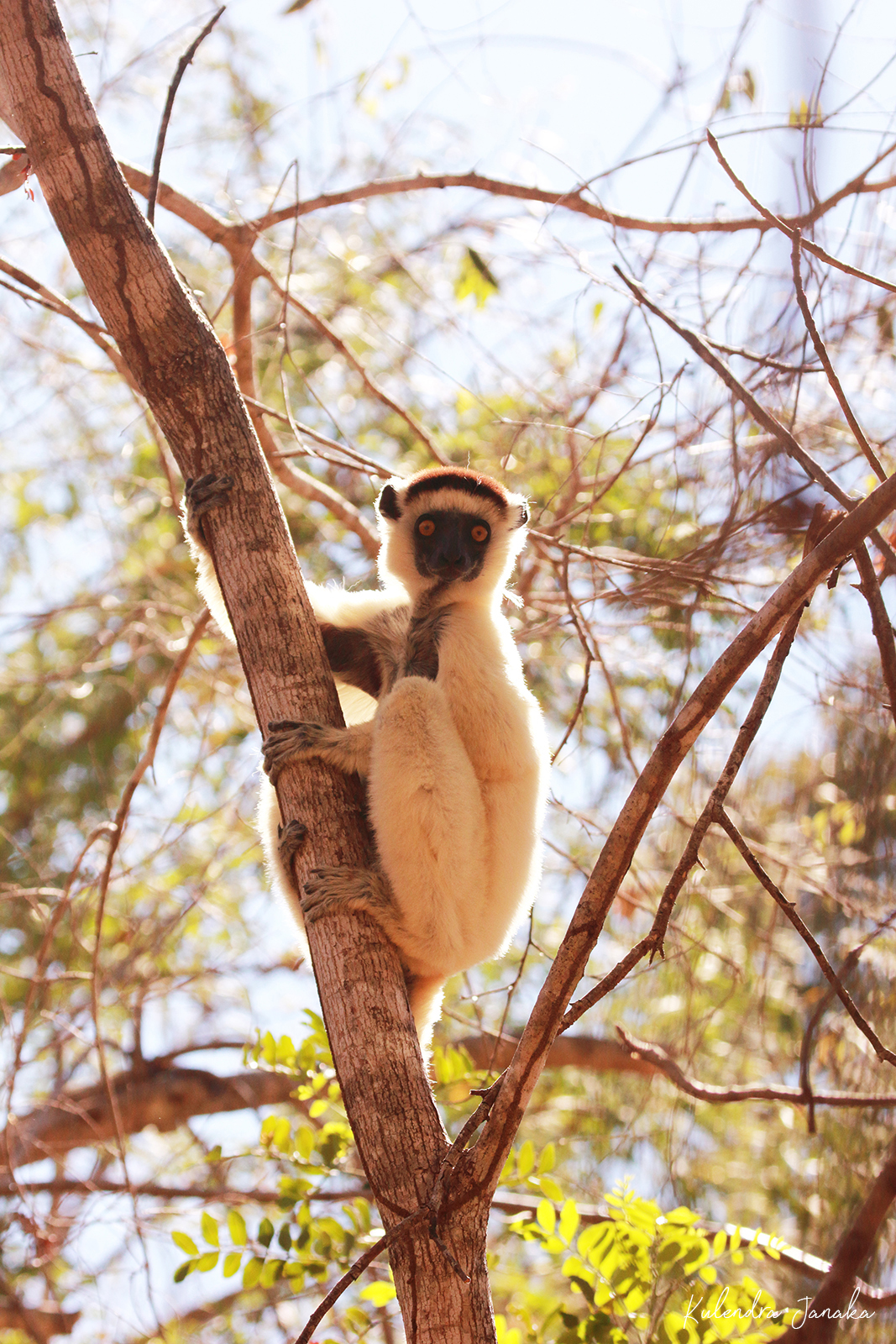
White Sifaka (Propithecus verreauxi) 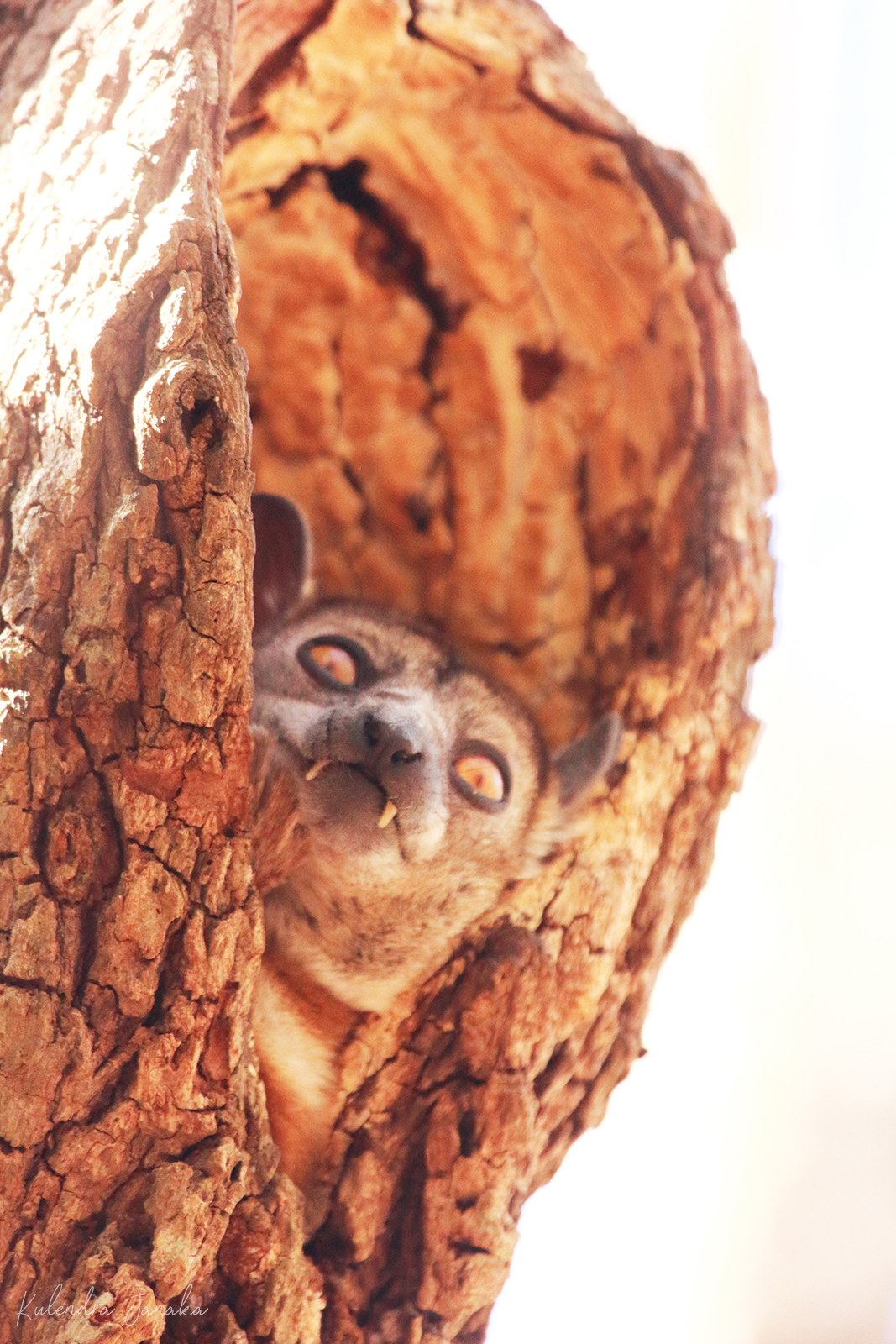
A Red Tailed Lemur (Lepilemur ruficaudatus) peeks out of its day time hideout.
Kirindy Private Reserve – Accommodation
While I can understand that a logging company would work on replanting, it was a complete surprise for me that they actually do conservation. The Kirindy Private Reserve is quite well maintained with very good attention paid to the fauna and flora. The guides seemed to be quite knowledgeble and passionate about the ecosystem and were very friendly. The lodging facilities were adequate; there are cabanas set up with double beds and attached bathrooms. While there is no hot water, there is a continuous water supply and a shower facility. The electricity supply last only overnight and is provided via solar power. Given that you are in the middle of the forest, don’t be surprised if some of the smaller wildlife, such as geckos, frogs and birds pay a visit over to your cabana. The lodge also has a small cafeteria with some of the staff speaking English.
Ecology
The forests in the region around Morondava, to which both the Kirindy Private Reserve and the Kirindy – Mitea belong, are known technically as dry deciduous. Trees in deciduous forests lose their leaves during one season (the dry season) and regrow them in the other (wet or rainy season). July, the time that I visited it, was in the middle of the dry season that runs from March to December. In addition to the roads being better navigable, dry season is also a good time for wildlife enthusiasts as it is easier to spot animals and the animals generally frequent the available waterholes.
My one-night/two-day stay in Kirindy consisted of a short afternoon walk, a night walk and a subsequent morning walk. Needless to say that it was a complete delight.
While lemurs are perhaps the most famous animals from Madagascar, the country’s bio-diversity spans far beyond that. A large portion of all animals found in Madagascar are endemic to Madagascar (in fact , the lowest endemic fauna is birds with only about 30% being endemic).
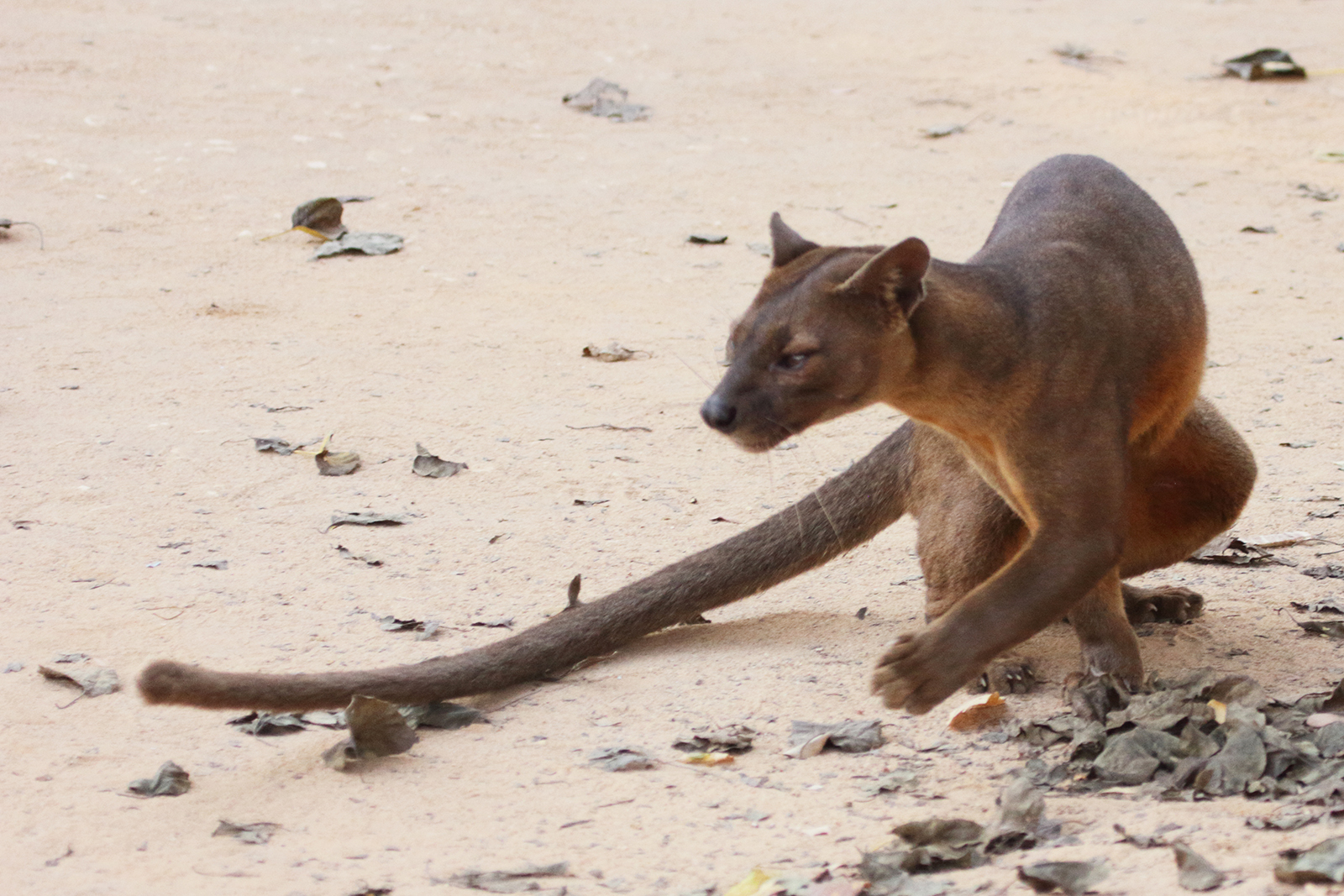
The Fossa (Cryptoprocta ferox) is the largest carnivore in Madagascar. 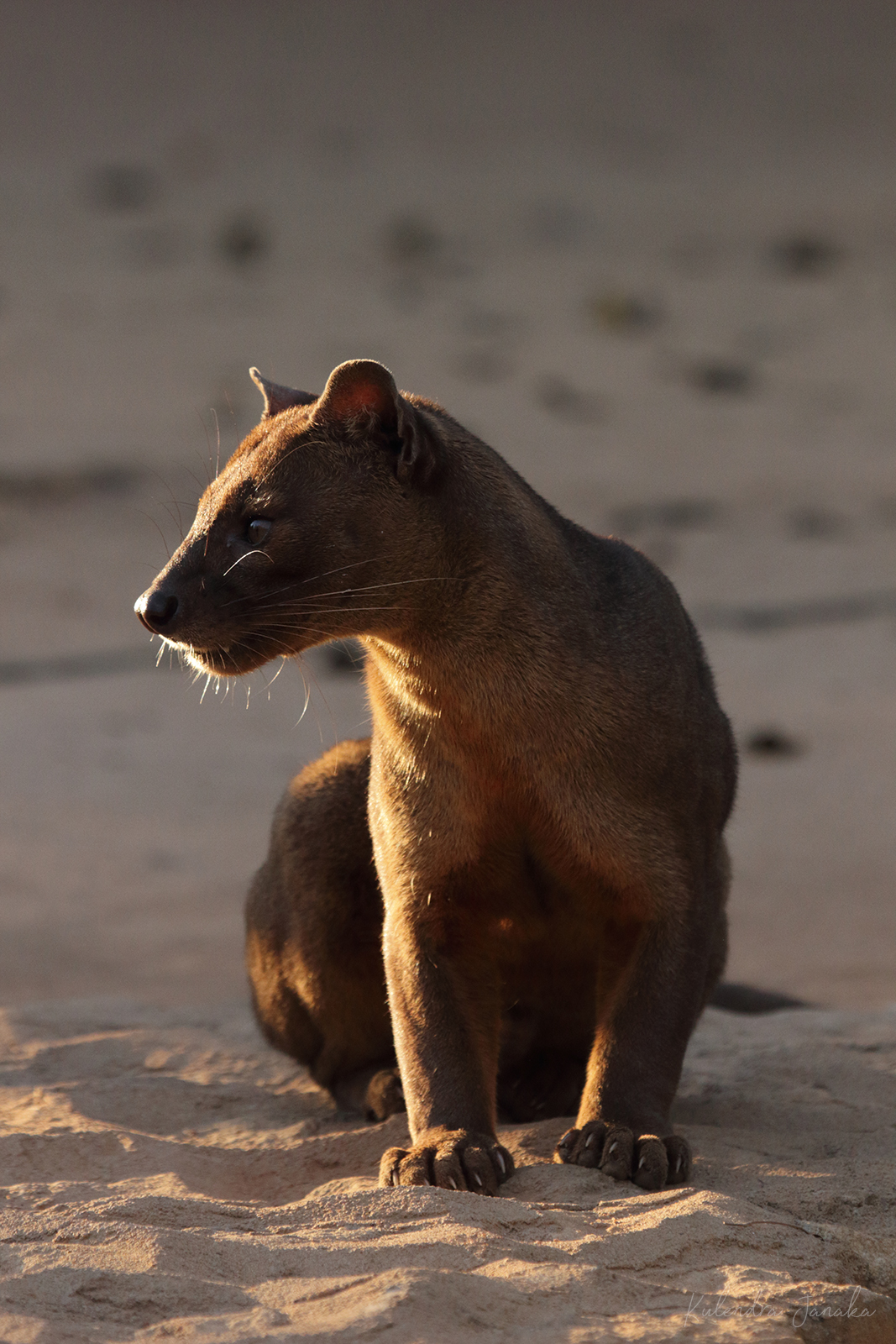
Convergent evolution has made it look like a cat but also looks like a mongoose or a civet. 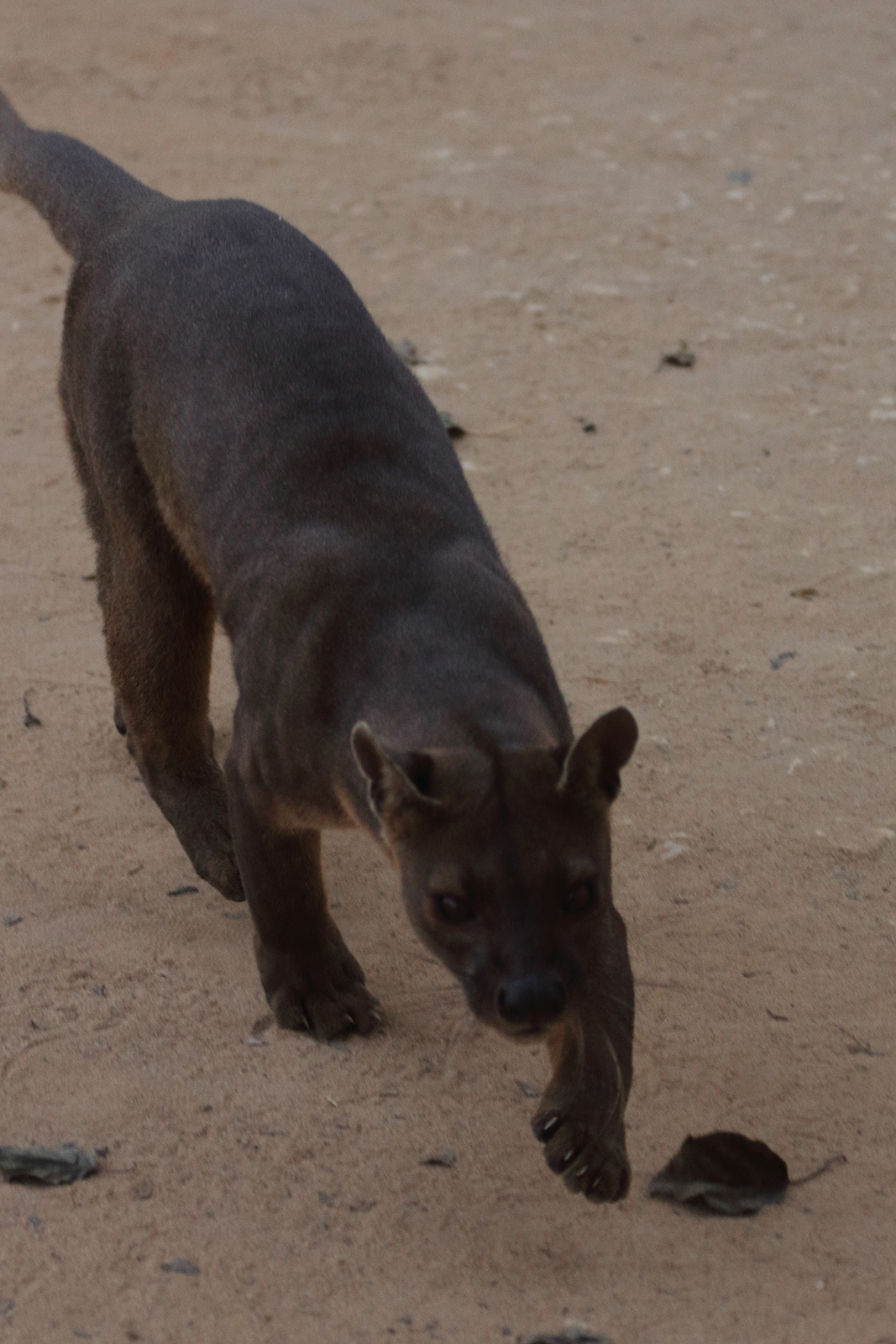
Some claim that the Fossa look like a small cougar. At more than 5ft nose to tail, I wouldn’t call it necessarily very small.
The Fossa (also made famous by the movie Madagascar) is the largest carnivore in Madagascar and is an interesting specimen of convergent evolution. The Fossa (Cryptoprocta ferox) is an animal that looks quite similar to a cat when it comes to the body structure including paws and tail, but also has mongoose or civet like features. However, the species actually belongs to a family on its own known as Eupleridae (cats, including big-cats such as lions and leopards, form a separate family known as Felidae, while mongooses belong to Herpestidae family. Civets form a family on their own known as Viviridae). From an evolutionary standpoint, the Fossa evolved in isolation and had a common ancestor with the other mammalian carnivores in the island that also consists of civets and mongooses. While all of them look similar to mongooses, civets and cats, they have a completely different genetic makeup. The similar looks come from what is known as convergent evolution which suggests that when there are similar ecological niches to be exploited, animals would develop similar features. One excellent (though sadly, extinct) example of convergent evolution is the Tasmanian Tiger. While it looked more like a dog, it was genetically closer to Kangaroos (i.e. marsupirals) than canines. One of my items-to-tick when visiting Madagascar was to see a Fossa in its natural habitat. Having seen one each day I was there, I would be bold enough to say that if you want to see Fossas, go to Kirindy Private Reserve. You are bound to spot at least one of them as they come over to the camp grounds everyday.
The time I visited Madagascar, the month of July, also seemed to have coincided with the season sifakas give birth. On my first excursion it self, I was quite lucky to see a White Sifaka (Propithecus verreaxui) with a baby clinging to its belly. As the babies move to the backs of their mothers after about 6-8 weeks. We can safely guess that it was very young.
All lemurs including sifakas exploit the same ecological niche as monkeys. While the larger ones look very much like monkeys, the smaller ones, such as mouse lemurs, look more like lorises which they are more closely related to. However the habits between lemurs vary as much as their looks. The White Sifakas for example eat only leaves while Red Fronted Brown Lemurs eat leaves, fruits and seeds. While I could not verify this through a third-party, according to my guide, the White Sifakas obtain almost all the water they need through the leaves they eat. The differences extend to their locomotive habits as well. Sifakas, who belong to the Indriidae family, walk upright when on ground and use a side-to-side or a forward hop to navigate, while the Red Fronted Brown Lemur, who belongs to Lemuridae family, adopt a four legged method similar to squirrels.
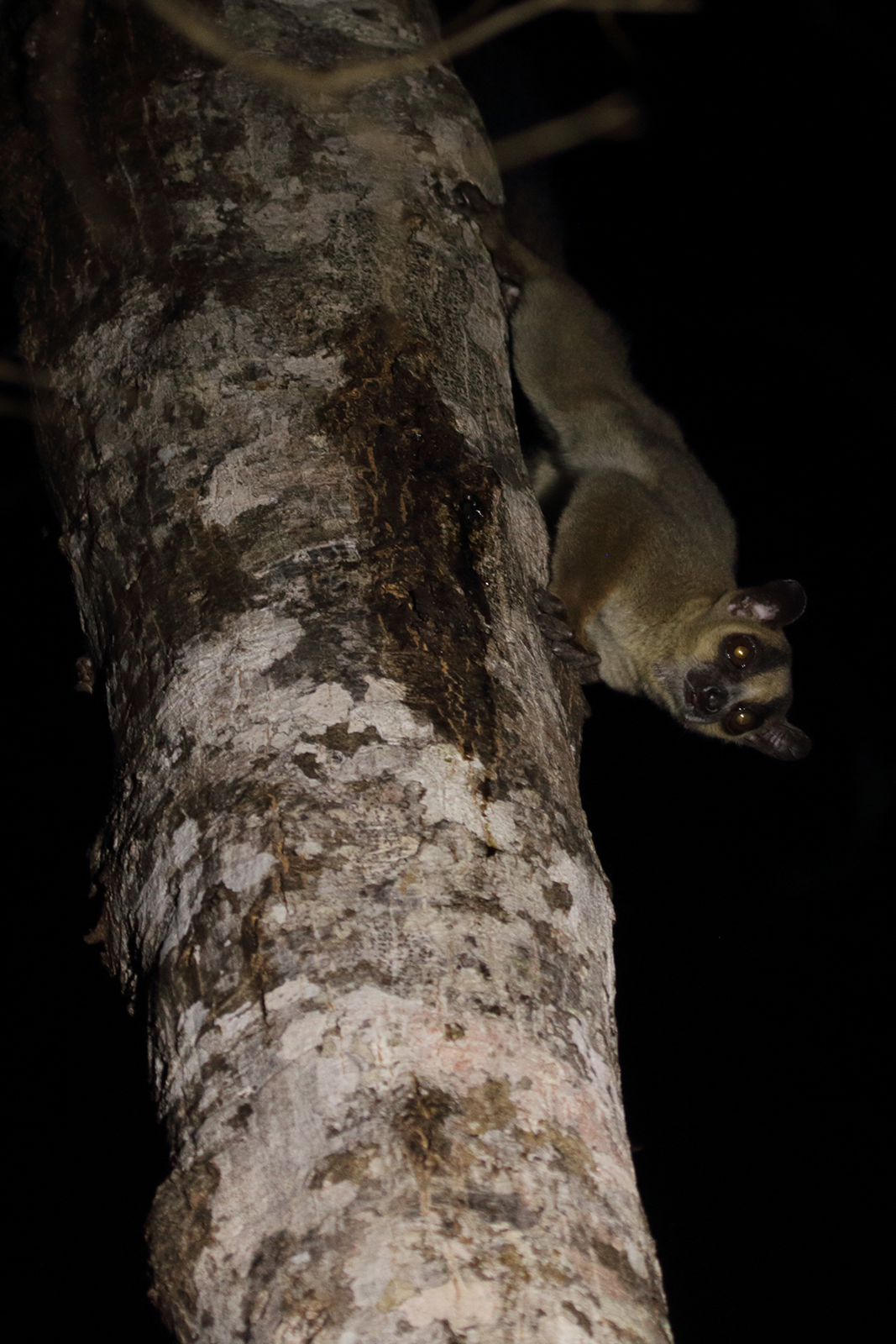
Fork Faced Lemur (Phaner fulcifer) 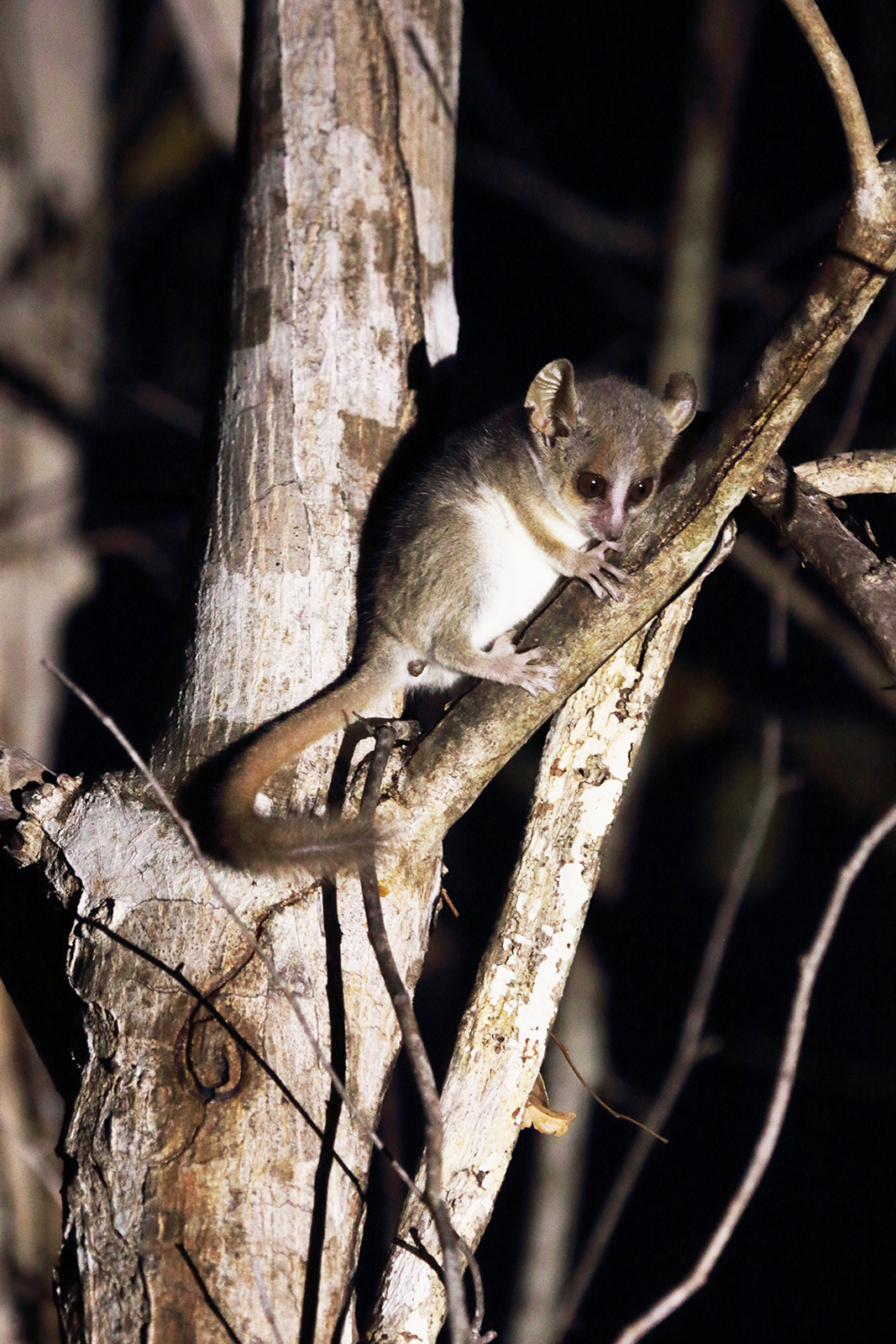
Grey Mouse Lemur (Microcebus murinus) belongs to the one of the smallest species of lemurs growing to a total length of only 28cm. 
A Red Tailed Sportive Lemur (Lepilemur ruficaudatus) is also nocturnal. I managed to capture this during day time thanks to my guide who spotted its hideout.
The night safari in Kirindy consisted of a hour-or-so long walk around the forest. While walking around in a forest at night could be dangerous, Madagascar has no animals that could threaten a human. We set out on our night hike about a kilometer away from the camp. Without my guide, I would’ve been at a complete loss in spotting the nocturnal lemurs. The safari was successful to the point that I was able to spot four of the six nocturnal lemurs found in Kirindy, including the world’s smallest lemur. Unfortunately, Madam Beth’s Mouse Lemur (the smallest lemur in the world), managed to escape my camera.
About 30% of all birds found in Madagascar are endemic. I do not know if it was just my luck that all the birds I managed to photograph were endemic as well.
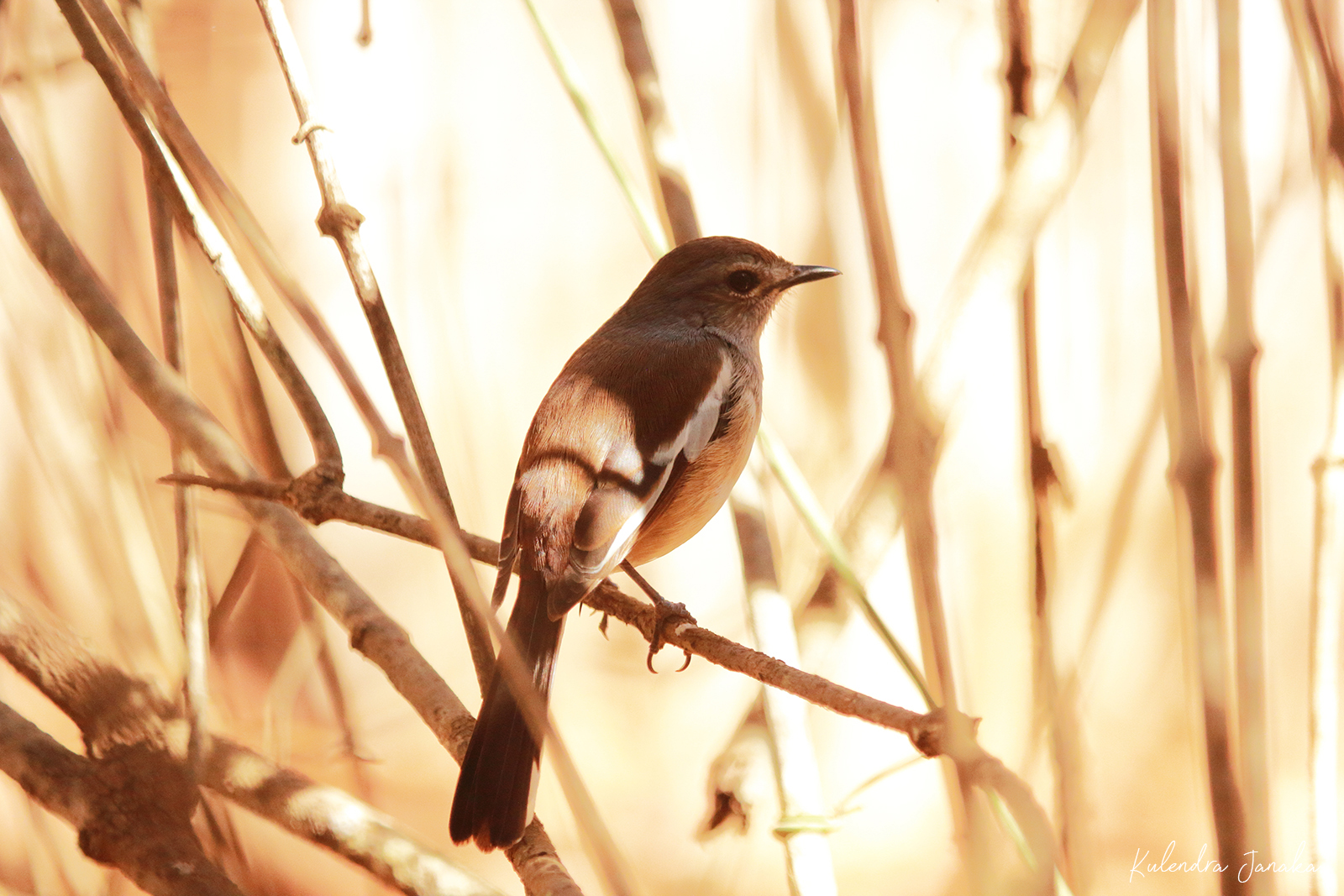
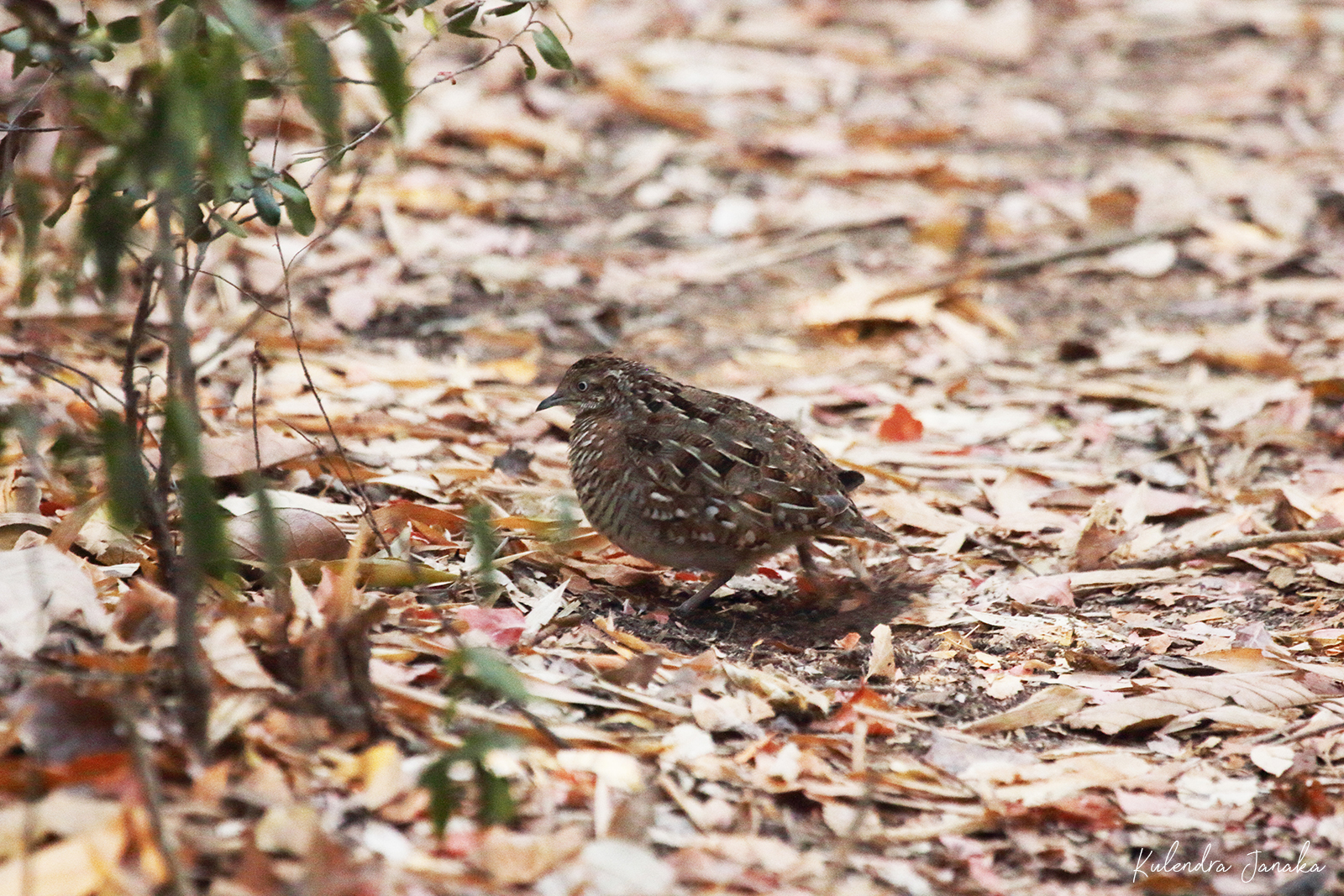
Madagascar buttonquail (Turnix nigricollis). 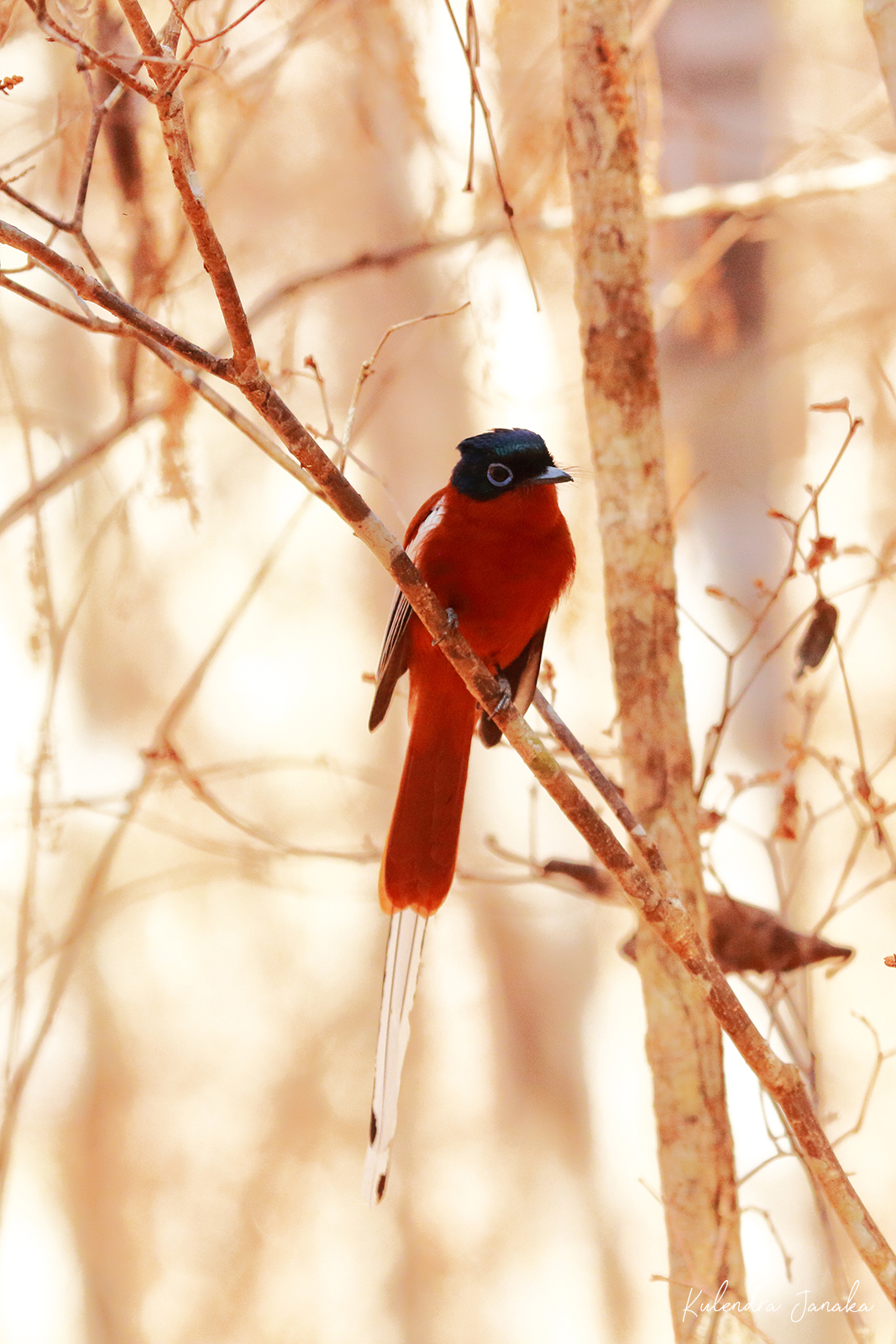
Malagasy Paradise Flycatcher (Terpsiphone mutata) though related to other paradise flycatchers in Africa and India, have been separated from them for a long time that they are a species on their own. 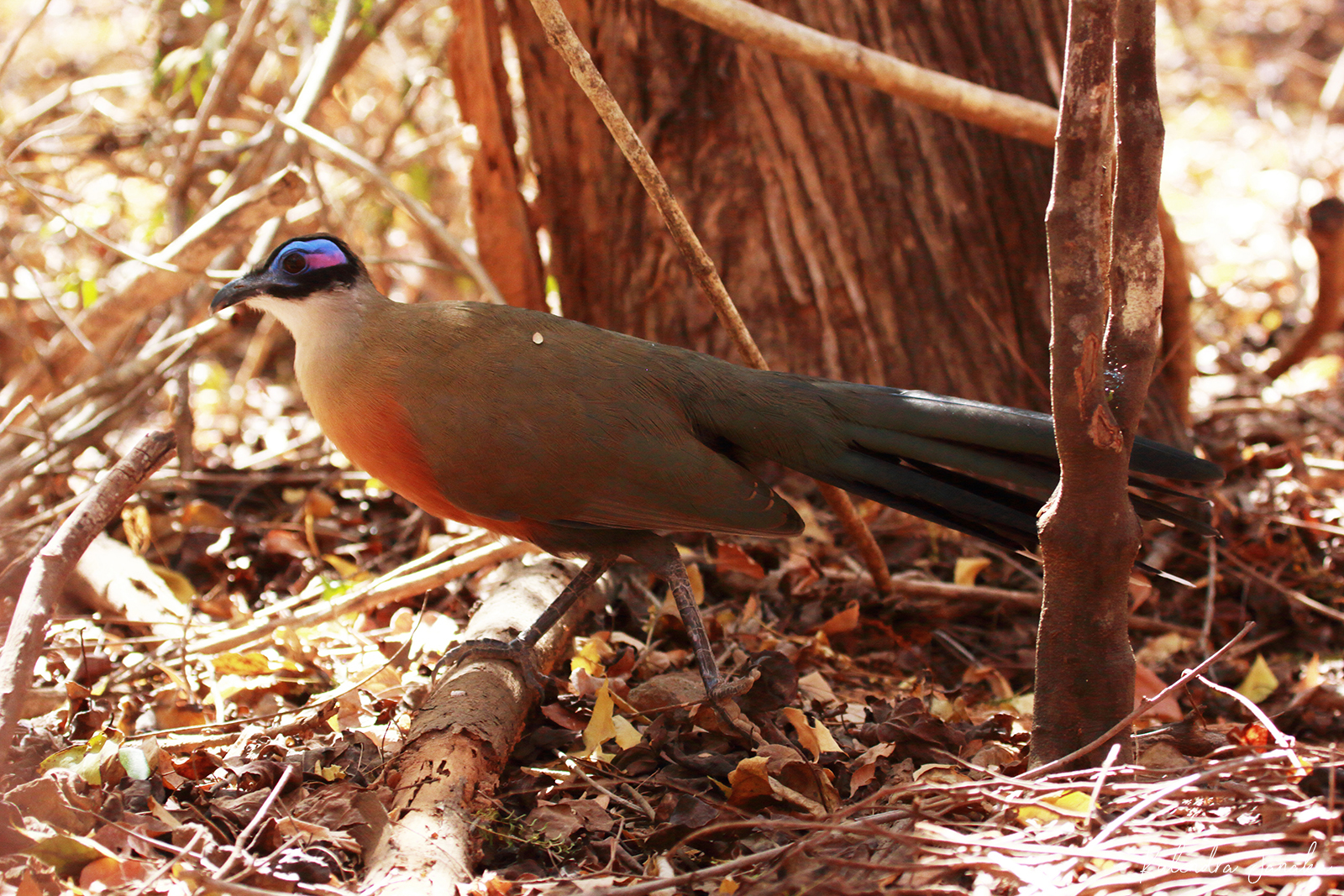
The Giant Coua (Coua gigas) is endemic to Madagascar and are found on the western and southern regions. 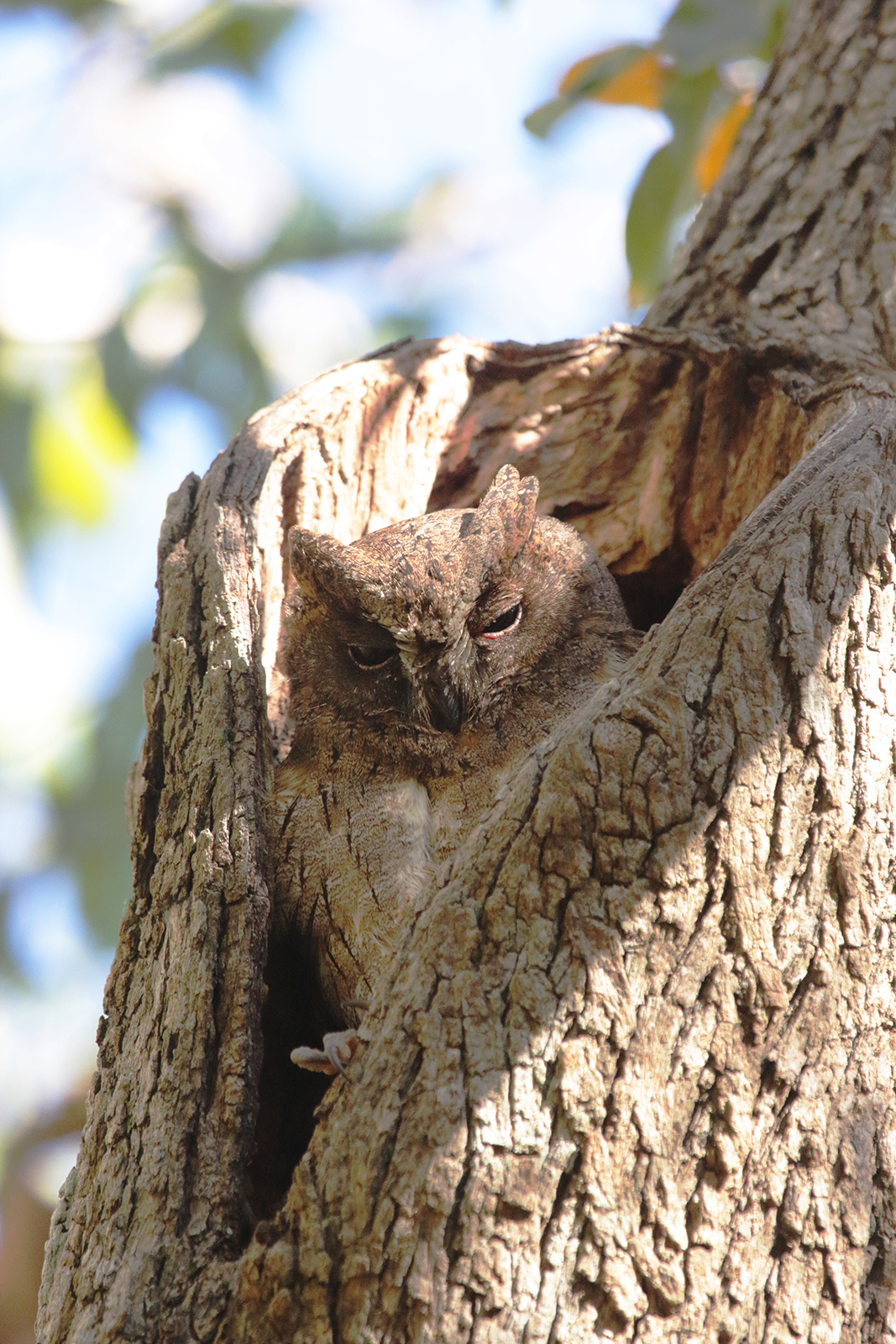
Madagascar Scops Owl. 
Crested Coua (Coua cristata).
While I could not spend much time exploring the reptiles in Kirindy, I was lucky to spot an Ocelot Gecko (Paroedura pictus) on my night safari. The gecko, much like many animals in Madagascar is endemic, but surprisingly (or not) has managed to make it to the exotic pet trade. I hope that it would not also end up as an endangered species because people try to sell it as a pet and get removed from its natural habitat. I was also able to spot a snake, Mimophis mahfalensis, in Kirindy which belongs to the family Colubridae. While there are some Colubrids that are highly venomous to humans, like the Boomslang, this one is doesn’t pose a threat to humans as like most of the other members in its family. Unfortunately my hopes to see a Hognose snake didn’t get fulfilled on this journey.

The Ocelot Gecko (Paroedura pictus) is endemic to Madagascar, but it is apparently a popular pet in other parts of the world. 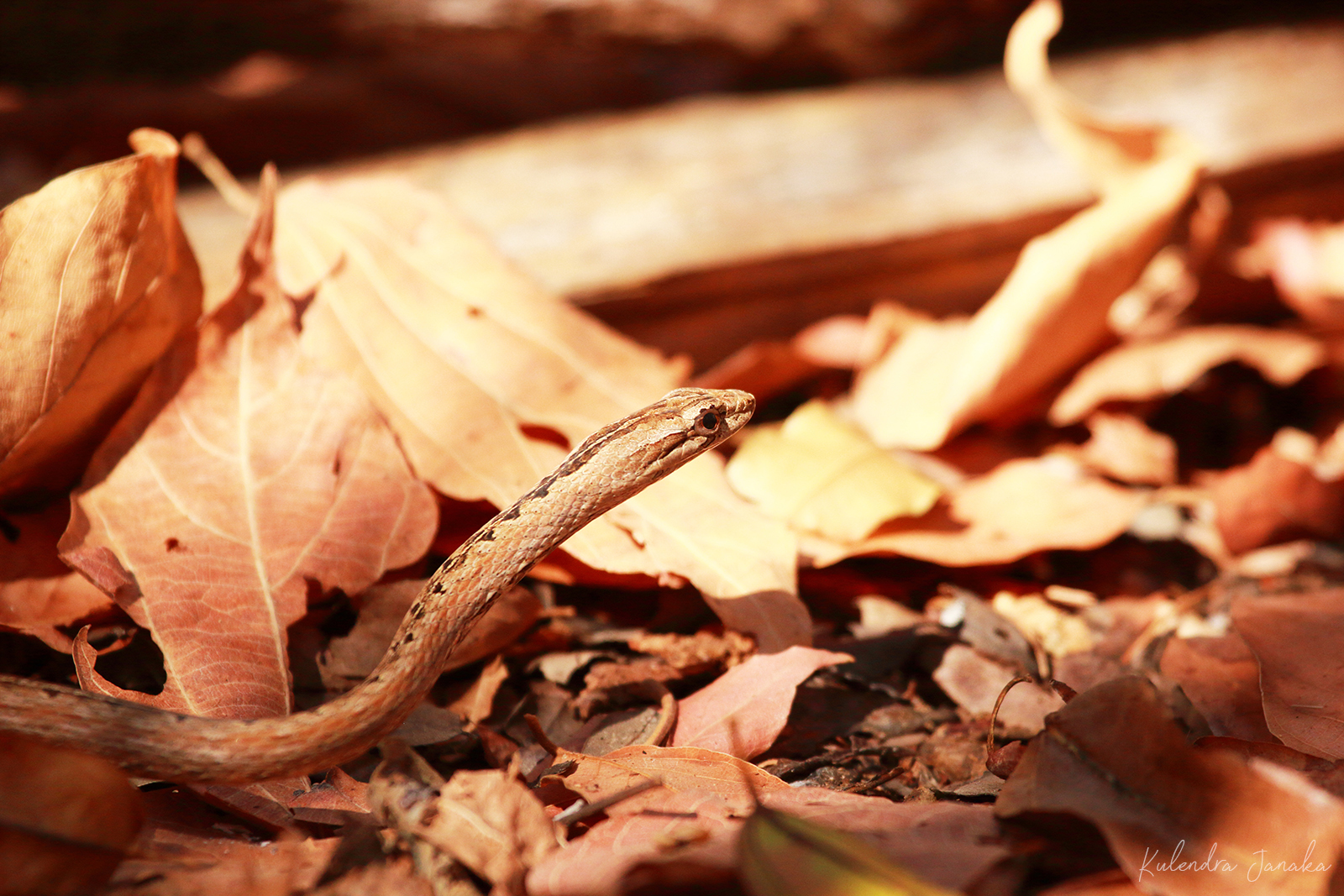
While there are snakes in Madagascar, none of them are venemous enough to endanger human lives. Mimophis mahfalensis is a colubrid snake endemic to Madagascar.
After my two day visit to Kirindy, I headed back to Morondava to spend one night over there before heading back to the capital. Of course, before heading back, I would head over to the iconic Avenue of Baobabs to see if it is as beautiful as claimed.
